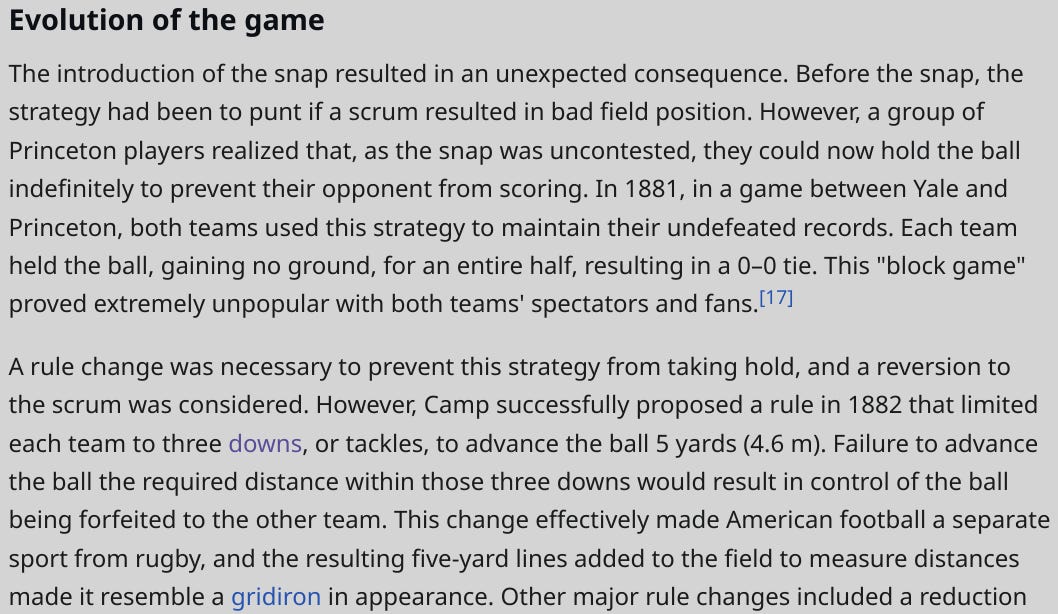The Game That Changed The Game
The most important game of 1881 was also the last.
Yale was scheduled to face Princeton at the old Polo Grounds in New York City on November 24. Though it was mentioned in the local New York newspapers, I have not yet found any advertisements for the game:
It turns out that Rutgers had played Columbia at the Polo Grounds the day before — and that game was horrible due to the awful weather:
Rutgers lost that game 2-0, though the final score was not listed by the newspaper. Note that Columbia only managed a single successful goal from its 4 touchdowns, and that Rutger’s six safeties netted only one additional point for Columbia.
Well, the weather was no better on the 24th.
The result was a scoreless draw.
Given the dramatic reports in the New York papers, the reports of this game elsewhere might surprise you.
At least one paper in the west (i.e. Chicago) featured the wire description of the game:
It’s interesting to see coverage of this game so widespread at the time. Football was barely a sport, and the “tradition” of the Ivy League schools playing against each other was certainly anything but well established. I believe that some of the lore and mystique of American football came about because of news telegrams like this one.
In the end, this game prompted a major change in the football rules. This is the game that prompted the “downs” system.
A “down” refers to a player being tackled to the ground successfully. Up to this point, there was no “down” rule at all. A team could hold on to the ball indefinitely, which was part of the problem with the unsatisfactory Yale - Princeton snowy affair. Wikipedia puts it like this:
Now, this article is not entirely correct. As you can see from the articles copied above, it’s not true that Yale and Princeton simply dominated the ball for an entire half each. However, it is pretty clear to see why such a drab result from such an anticipated game would presage a rules change like this one.
We’ll talk more tomorrow about precisely how the new “downs” rule was worded, and what it has meant to the history of the sport.





















